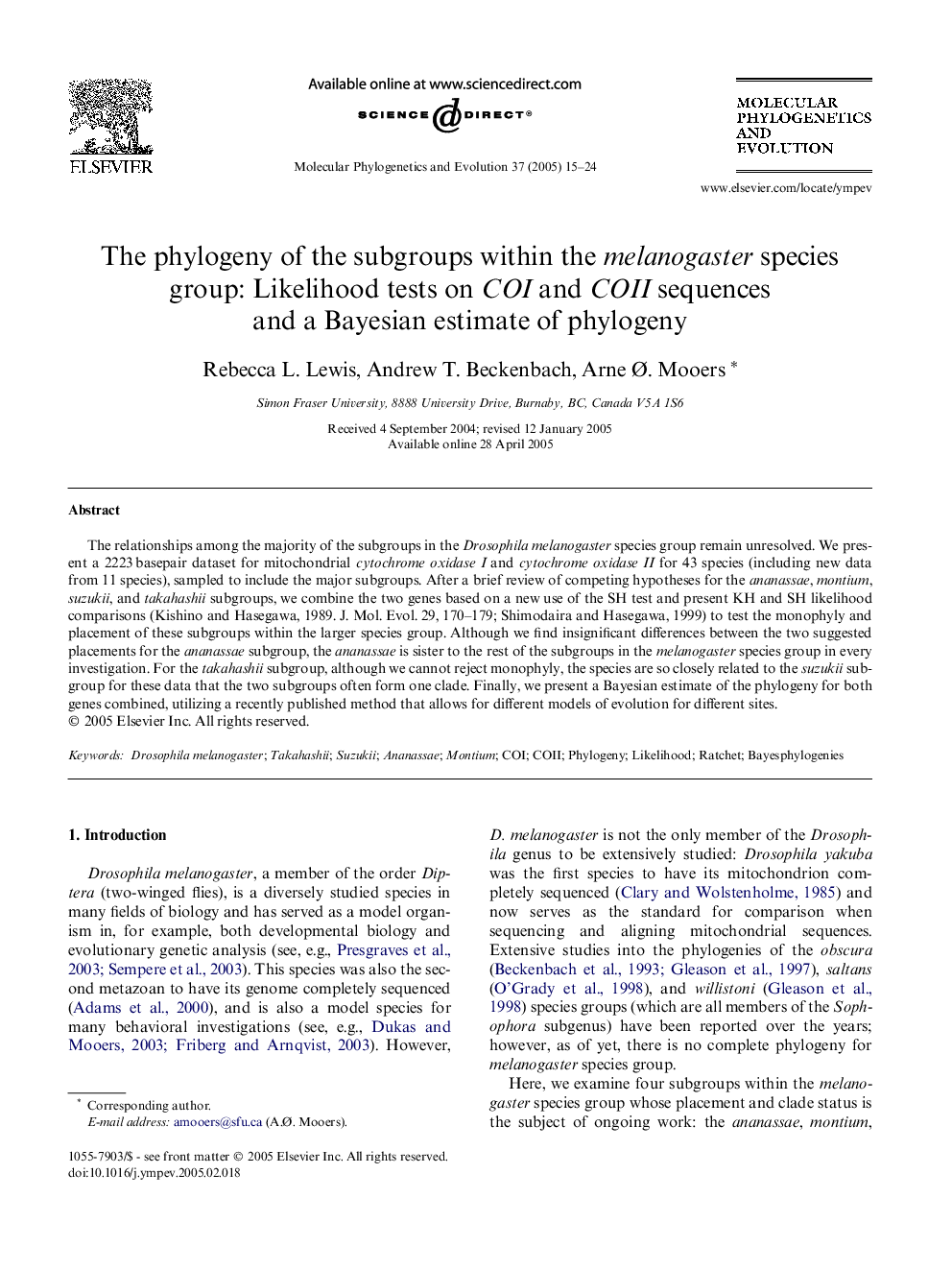| Article ID | Journal | Published Year | Pages | File Type |
|---|---|---|---|---|
| 9142885 | Molecular Phylogenetics and Evolution | 2005 | 10 Pages |
Abstract
The relationships among the majority of the subgroups in the Drosophila melanogaster species group remain unresolved. We present a 2223Â basepair dataset for mitochondrial cytochrome oxidase I and cytochrome oxidase II for 43 species (including new data from 11 species), sampled to include the major subgroups. After a brief review of competing hypotheses for the ananassae, montium, suzukii, and takahashii subgroups, we combine the two genes based on a new use of the SH test and present KH and SH likelihood comparisons (Kishino and Hasegawa, 1989. J. Mol. Evol. 29, 170-179; Shimodaira and Hasegawa, 1999) to test the monophyly and placement of these subgroups within the larger species group. Although we find insignificant differences between the two suggested placements for the ananassae subgroup, the ananassae is sister to the rest of the subgroups in the melanogaster species group in every investigation. For the takahashii subgroup, although we cannot reject monophyly, the species are so closely related to the suzukii subgroup for these data that the two subgroups often form one clade. Finally, we present a Bayesian estimate of the phylogeny for both genes combined, utilizing a recently published method that allows for different models of evolution for different sites.
Related Topics
Life Sciences
Agricultural and Biological Sciences
Ecology, Evolution, Behavior and Systematics
Authors
Rebecca L. Lewis, Andrew T. Beckenbach, Arne Ã. Mooers,
